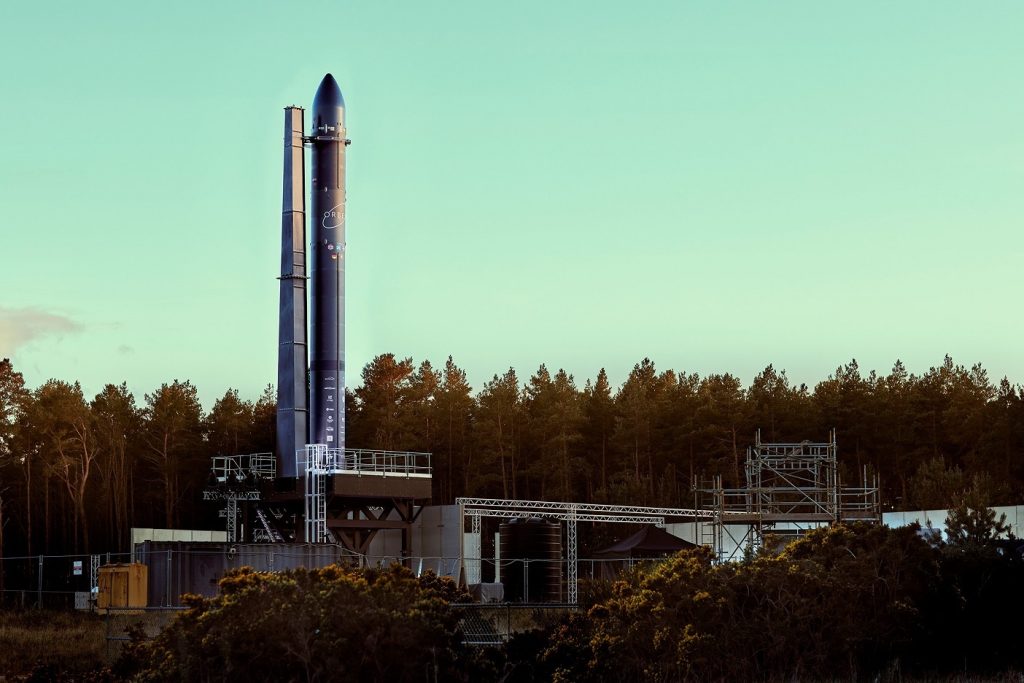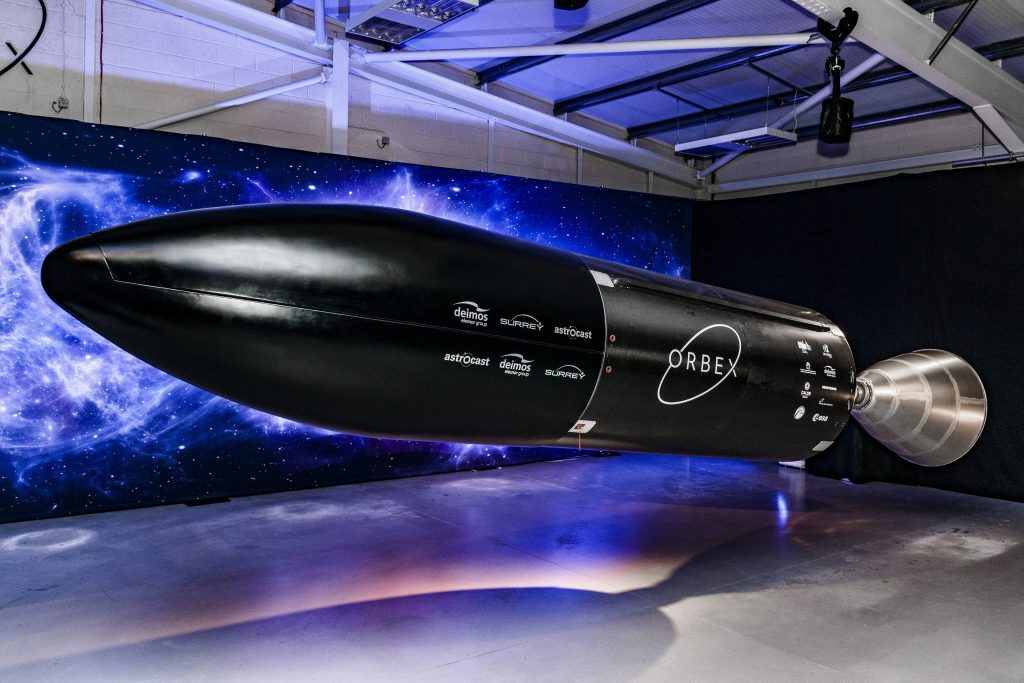British aerospace firm Orbex has announced the closure of a $46.4 million Series C funding round.
Orbex’s Prime rocket, which is powered by a 3D printed engine, is set to become the first launched from the UK’s upcoming Space Hub, once opened in Sutherland, Scotland. Using its newfound capital, raised via an investment led by the Scottish National Investment Bank, the firm plans to “scale up its resources” ahead of launch. The raise also sees it unlock a further $100 million in funding for future projects.
“We´re delighted to have closed this new funding round,” said Orbex CEO, Chris Larmour. “Orbex has made significant progress to get to this point, with the invention of ground-breaking, innovative technology, the rapid development and testing of the launch vehicle, the expansion of our manufacturing footprint in the UK and Denmark, the creation of the UK´s first orbital spaceport in mainland Scotland, and the growth in customers from the UK, Europe and America.”
Orbex’s Prime micro launcher
Though Orbex was founded in 2015, it didn’t exit stealth mode until July 2018, when it broke cover with an announcement that it had raised $40 million in public and private equity. Since then, the company has agreed a launch sharing agreement with U.S. aerospace competitor Rocket Lab, which will see its Prime rockets launched from Scotland’s Space Hub.
Orbex’s 19-meter-tall two-stage micro launcher is designed to propel payloads such as satellites weighing up to 180-kilos into polar orbits. Each of the rockets is powered by seven lightweight propulsion systems, which are built as a single-piece. Initially dubbed the ‘world’s largest 3D printed rocket engine,’ and manufactured via SLM Solutions technology, these biofuel-powered devices are said to have a 96% smaller carbon footprint than fossil-fuel-based competitors.
To accelerate the process of producing the Prime’s engines, Orbex commissioned AMCM to develop Europe’s largest industrial 3D printer in February 2021. Through the project, AMCM has set out to deliver a printing suite, complete with post-processing gear and ‘machine vision’ systems, that will facilitate the printing of more than 35 large-scale rocket engine and main stage turbo pump systems every year.

Priming for a first UK launch
Once opened on the north coast of mainland Scotland, Space Hub Sutherland will become the UK’s inaugural operational spaceport, from which launch firms will fire commercial payloads into low-altitude orientation orbits. Earlier this year, it was announced that Orbex’s Prime rocket is set to be the first launched from the new site, and it applied for a UK Civil Aviation Authority launch license in early-2022.
Having unveiled its Prime launch vehicle in its final form, Orbex is now performing integration tests, including the testing of its propellant tanks and engines. The company is also testing launch procedures such as the Prime’s rollout, strongback erection and fuelling procedures in advance of the first launch, which will carry a payload developed by small satellite developer Surrey Satellite Technology.
Orbex’s Series C funding round, meanwhile, which was backed by Jacobs, the Danish Green Future Fund and Verve Ventures, takes its total raised to $109.4 million. As well as financing the firm’s upcoming launch activities, the capital unlocks another $100 million tranche of funding over the next two years, paying for other initiatives across its business, including the build of a factory in nearby Moray.
“This is a very exciting time for the Scottish space sector,” added Nicola Douglas, Executive Director of the Scottish National Investment Bank. “This investment is a great example of the Bank working with other investors to support scale-ups in Scotland and aligns with our mission to invest in innovation and the industries of the future.”
“With Orbex, we will have a rocket assembled in Scotland, launching from Scotland and likely transporting satellites built in Scotland into orbit.”

3D printed rocket engines taking off
Orbex’s single-piece engine for the Prime is now one of several being manufactured in the aerospace sector with the aid of 3D printing. Also based in Scotland, Skyrora has 3D printed a rocket engine for its XL launch vehicle, which completed a 70kN hot-fire test in July 2022 under an ongoing European Space Agency (ESA) contract.
That month, Ursa Major unveiled its partially-3D printed Arroway engine as well, a liquid oxygen and methane-staged alternative to Russia’s commonly-used RD-180 and RD-181 propulsion systems. Designed so that ‘most of its parts’ can be additive manufactured, it’s thought the engine will meet the needs of US launch firms, who no longer have access to Russian-made 180s and 181s due to geopolitical tensions.
Likewise, private US aerospace Launcher passed another testing milestone with its 3D printed E-2 liquid rocket engine, earlier this year. Carried out at NASA’s Stennis Space Center, the test saw the firm’s rocket engine achieve nominal thrust, pressure, and oxidizer/fuel mixture ratio for the first time, and its engineers reportedly found the system in “perfect condition” after 40 seconds of test firing.
To stay up to date with the latest 3D printing news, don’t forget to subscribe to the 3D Printing Industry newsletter or follow us on Twitter or liking our page on Facebook.
While you’re here, why not subscribe to our Youtube channel? featuring discussion, debriefs, video shorts and webinar replays.
Are you looking for a job in the additive manufacturing industry? Visit 3D Printing Jobs for a selection of roles in the industry.
Featured image shows an Orbex Prime rocket prototype on its launch pad. Photo via Orbex.


